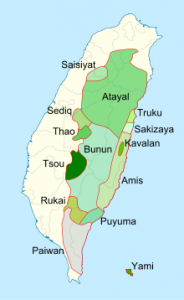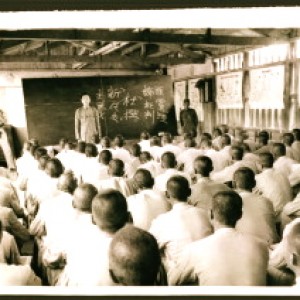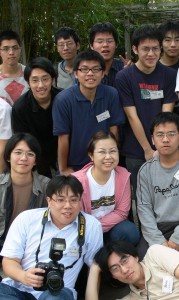Taiwanese American
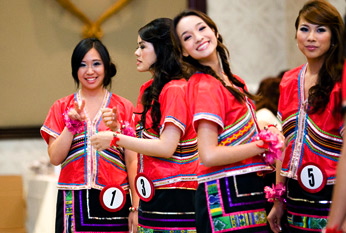
The History of Taiwan: Postwar Era and The 228 Incident (1/7)
Taiwan – This film covers the history, land reform, industry, religion, educational system, and urban activities of Taiwan in 1960. Sugar farming for Taiwan Sugar Corp shown.
(traditional Chinese: 台灣人; simplified Chinese: 台湾人;pinyin: Táiwān rén; Pe̍h-ōe-jī: Tâi-oân-lâng) may refer to individuals who either claim or are imputed cultural identity focused on Taiwan, or Taiwan Area including Penghu islands, Kinmen, and Matsu islands which has been governed by the Republic of China (ROC) since 1945 which mainly consist of 2 ethnic group of one being Han Chinese and Taiwanese Aborigines. The Han Chinese mainly consist of Hokkien people, Hakka people, and Mainland Chinese who arrived after World War II and Chinese Civil War with Chinese Nationalists. At least three competing (occasionally overlapping) paradigms are used to identify someone as a Taiwanese person: a nationalist criteria, self-identification (including the concept of “New Taiwanese”) criteria, and socio-cultural criteria. These standards are fluid, in keeping with an evolving social and political milieu. The complexity resulting from competing and evolving standards is compounded by a larger dispute regarding Taiwan’s identity crisis, the political status of Taiwan, and its potential de jure Taiwan independence or political integration with China.
98% of Taiwan’s population is made up of Han Chinese People, while 2% are Taiwanese aborigines. The composite category of “Taiwanese People” is often reputed by many Taiwanese to include a significant population of at least four constituent ethnic groups: the Hokkien (70%), the Hakka (15%),Fuzhou people (2%) mainly native of Matsu Islands, waishengren (or mainland Chinese) (11%), and Taiwanese aborigines (2%) (Copper 2003:12–13; Hsiao 2004:105). Although the concept of the “four great ethnic groups” was a deliberate attempt by the Hokkien-dominated Democratic Progressive Party (DPP) to defuse Chinese Taiwanese people tensions, this conception has become a dominant frame of reference for dealing with Taiwanese ethnic and national issues (Makeham 2005:4–5). Despite the wide use of the “four great ethnic groups” in public discourse as essentialized identities, the relationships between the peoples of Taiwan have been in a constant state of convergence and negotiation for centuries. The continuing process of cross-ethnic mixing with ethnicities from within and outside Taiwan, combined with the disappearance of ethnic barriers due to a shared socio-political experience, has led to the emergence of “Taiwanese” as a larger ethnic group (Harrell & Huang 1994:14–15), except on the island of Kinmen whose populace consider themselves as Kinmenese or Chinese, and as well as inhabitant of Matsu Islands whereby they also consider themselves as Chinese.
|
|
||||||||||
Citizens of The Republic of China from Taiwan who have gained American nationality are called Taiwanese Americans. Whether Taiwanese Americans should be considered Chinese Americans is a subject of some political controversy, though the American government generally considers Taiwanese Americans as Chinese Americans for political and historical reasons. The controversy over the inclusion or exclusion of Taiwanese Americans as Chinese has extended to the name of the government bureau of Taiwanhandling Taiwanese Americans affairs which was controversially changed in 2006 from the Overseas Chinese Affairs Commission to the Overseas Compatriot Affairs Commission.
Demographic research tends to include immigrants from mainland China, Hong Kong, Macau, and Taiwan as well as overseas Chinese who have immigrated from Southeast Asia into the broadly-defined Chinese American category as both the governments of the Republic of China and the United States account for Taiwanese Americans as a subgroup of Chinese Americans.
According to the 2010 U.S. Census, 49% of people who consider themselves Taiwanese live in the state of California. New York and Texas have the second and third largest Taiwanese American populations, respectively.
Prior to the 1950’s emigration from Taiwan was negligible. During Taiwan’s early history, the island was populated by Austronesian aboriginals and in the 17th and 18th centuries it served as a destination point for migrating Chinese, primarily Hoklos and Hakka. In 1895, Japan took over control of Taiwan following Japan’s victory over China in the First Sino-Japanese war. Japanese control severely curtailed any movement off the island in the interest of containing dissent against the Japanese Empire.
On the other side of the Pacific Ocean, opportunities for immigration from Taiwan to the United States were virtually nonexistent before the 1950’s. Previously, in the 1840s when American companies began recruiting cheap, accessible labor from Asia to develop Hawaii and the frontier West, Taiwan was too small to be a target for recruiters.
In 1949, the Chinese Communist Party took control of mainland China, and the remnant armies of the Republic of China under Chiang Kai-Shek retreated to Taiwan. Because of the Cold War, the United States continued to recognize the Kuomintang-led Republic of China as the sole legitimate government of all of China from 1949 until 1979. As a result, immigration from Taiwan was counted under within the same quota for both mainland China and Taiwan. However, because the Communists banned emigration to the United States until 1977, this quota for immigrants from China was almost exclusively filled by immigrants from Taiwan. After the national origins system was relaxed and repealed by Immigration Acts in 1952 and 1965, many Taiwanese people came to the United States, forming the first wave of Taiwanese immigration. Their entry into the United States was facilitated by the immigration act of 1965, which created a system in which persons with professional skills and family ties in the United States were given preferential status, regardless of the nation of origin.
In 1979, the United States broke diplomatic relations with the Republic of China, while the Taiwan Relations Act gave Taiwan a separate immigration quota from that of mainland China.
Before the late 1960’s, Taiwanese immigrants to the United States tended to be waishengren (mainlanders) who were people that immigrated to Taiwan with the Kuomintang after the fall of mainland China to the Communists. Later immigrants tended to increasingly be benshengren, whose ancestors had lived on Taiwan before 1949. With improving economic and political conditions in Taiwan, Taiwanese immigration to the United States began to subside in the early-1980’s.
Socioeconomics
Model Minority – Education
Taiwanese culture places a high value on education, as many Taiwanese Americans are very highly educated and hold advanced degrees from numerous prestigious universities around the United States. They often hold high-end occupations as doctors, lawyers, engineers, accountants, professors and scientists. Taiwanese Americans also hold positions in America within the aerospace, defense, research, academic and the health care sectors. Several distinguished academics, including Nobel Prize winners, are Taiwanese Americans. Among Taiwanese Americans, medicine is regarded as particularly high status for historical reasons. During the Japanese occupation of Taiwan before 1945, Taiwanese were barred from politics and administration but were encouraged to become doctors and nurses, leading to this profession being regarded as a high status means of social advancement.
Taiwanese Americans from all social backgrounds have achieved significant advances in their educational levels, income, life expectancy and other social indicators as the financial and socioeconomic opportunities offered by the United States have lift many Taiwanese Americans out of poverty joining the ranks of the America’s educated and upper middle class. Estimates indicate that a disproportionate percentage of Taiwanese students attend elite universities despite constituting less than 0.5% of the U.S. population. Taiwanese Americans have the highest education attainment level in the United States, surpassing any other ethnic group in the country, according to U.S Census Bureau data released in 2010. According to the 2010 Labor Statistics from U.S. Census Bureau, 73.6% of all Taiwanese Americans have attained a bachelor’s or high degree (compared to 28.2% nationally and 49.9% for all Asian American groups). 80.0% of Taiwanese American men attained a bachelors degree and 68.3% of Taiwanese American women attained a bachelors degree. 39.1% of all Taiwanese in the United States possess a master’s, doctorate or other professional degree, which is nearly four times the national average.
Employment
Many Taiwanese Americans work as white collar professionals, many of whom are highly educated, salaried professionals whose work is largely self-directed in management, professional, and related occupations such as engineering, medicine, investment banking, law, and academia. 66.2% of Taiwanese Americans work in many white collar professions compared 35.9% for the general American population and 48.1% for Asian Americans. 71.3% of Taiwanese men and 60.4% of Taiwanese women are in working in management, professional, and related occupations. They also hold some of the lowest unemployment rates in nation with a figure of 4.3% compared to a national rate of 6.9%.
Economics
According to the 2009 U.S. Census, Taiwanese American men had one of “the highest year-round, full-time median earnings” with a figure of $76,587, and Taiwanese American women had a median income of $51,307. They also have one of the highest median incomes among any ethnic minority in United States with a figure of $68,809, which is roughly 37% percent above the national average. They have one of the lowest poverty rates in nation with a figure of 9.5% compared to 11.3% for the general American population but the figure was slightly higher than for all Asian Americans which stood at 9.1%.
Settlement
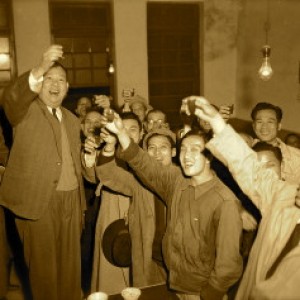 Owing to their relative wealth and education attainment, many Taiwanese immigrants have not settled in the old Cantonese-speaking Chinatowns. Instead, they have generally immigrated directly to American suburbia and in effect, they started new Taiwanese communities. For example, beginning in the late 1970s and early 1980’s at the height of Taiwanese immigration, the Taiwanese emigrants were instrumental in the development of Monterey Park, California in Los Angeles – thus causing it to earn the moniker of “Little Taipei” and derisively as “Mandarin Park” – and vicinity and in Flushing, New York, which generally reflected new investments and capital flowing from Taiwan into newer Taiwanese enclaves instead of the well-established and mostly dilapidated Chinatowns.
Owing to their relative wealth and education attainment, many Taiwanese immigrants have not settled in the old Cantonese-speaking Chinatowns. Instead, they have generally immigrated directly to American suburbia and in effect, they started new Taiwanese communities. For example, beginning in the late 1970s and early 1980’s at the height of Taiwanese immigration, the Taiwanese emigrants were instrumental in the development of Monterey Park, California in Los Angeles – thus causing it to earn the moniker of “Little Taipei” and derisively as “Mandarin Park” – and vicinity and in Flushing, New York, which generally reflected new investments and capital flowing from Taiwan into newer Taiwanese enclaves instead of the well-established and mostly dilapidated Chinatowns.
While Monterey Park is no longer the major Taiwanese community in Los Angeles today, Flushing remains the main vibrant Taiwanese cultural, commercial, and political center in New York City. In Los Angeles County, California, newer communities such as Rowland Heights, Hacienda Heights, Arcadia, San Marino, Diamond Bar, Walnut, San Gabriel, Temple City, give the ambience of “Little Taipei” . However, many annual Taiwanese cultural events (especially during Taiwanese Heritage Week) are still held in Monterey Park. As an attempt to duplicate the Taiwanese success of Monterey Park in Houston, Texas, Taiwanese immigrant entrepreneurs pioneered in the mid 1980s what is now widely considered as Houston’s new Chinatown on Bellaire Boulevard (although many Vietnamese-born Chinese immigrants have increasingly settled and set up shop in the area as well). A number of Taiwanese American businesses and organizations still operate and flourish in this part of Houston.
The prestige and performance of particular school districts, as well as access to careers in high-tech firms, have in general played significant parts in influencing the settlement patterns of Taiwanese Americans. Areas with high concentrations of Taiwanese immigrants include the San Gabriel Valley (Greater Los Angeles), Santa Clara Valley (Cupertino, San Jose), East Bay (El Cerrito,Oakland), Los Angeles/Orange County border communities (Cerritos/Artesia), and Irvine in Central Orange County. Outside of California, there are also major Taiwanese concentrations in Flushing, New York, Rockville, Maryland (northwest of Washington, D.C.), Sugar Land, Texas (near Houston), Richardson, Texas (near Dallas), Bellevue, Washington (and adjacent areas) (part of the Greater Seattle Area’s “Eastside” communities), and Chandler, Arizona. Additionally, the northeastern suburbs of the Atlanta, Georgia area has also received a significant influx of Taiwanese immigrant residents. The Taiwanese population was formerly dominant in Monterey Park, California. The San Gabriel Valley has a larger population of “49er” Taiwanese (also known as Waishengren), essentially outnumbering native Taiwanese. Since the middle 1980s through the 1990s, however, large numbers of more affluent Taiwanese Americans began moving out to more upscale neighborhoods like Cupertino, San Marino, Arcadia, South Pasadena, and Temple City in Western San Gabriel Valley; Hacienda Heights, Rowland Heights, Walnut, and Diamond Bar in Eastern San Gabriel Valley; with immigrants from the People’s Republic of China and Cantonese and Teochew (mostly from Vietnam) taking their place in Monterey Park, as well as Alhambra.
Similarly, for the past 10 years, Benshengren have been immigrating to upscale neighborhoods in Los Angeles and Orange County such as Cerritos and Irvine respectively. The city of Cerritos is located in Los Angeles County but borders Orange County and has a large diversity of Asian immigrants. The city of Irvine has a very large Benshengren population, though now more and more Waishengren and Mainland Chinese immigrants have flocked to the city. The Irvine Chinese School, which serves mostly the American-born children of Taiwanese immigrants, is one of the largest Chinese Schools in the Orange County area. These immigrants belong to branches from some of the most politically and economically powerful Taiwanese families (with the surnames Chiang, Chen, Cheng, Kung, Tsai, and Wu).
Convenient Taiwanese-oriented strip malls and shopping complexes are typically complete with supermarkets and restaurants, thus Taiwanese American suburbanites have very little need to visit the older Chinatowns. In addition, shops offering imported Taiwanese goods allow for young Taiwanese expatriates in the United States to keep up with the current trends and popular culture of Taiwan. Taiwanese Americans have also brought with them Taiwanese cuisine to the communities they have settled, which, possibly excluding bubble tea, is not generally well-known or served outside these aforementioned Taiwanese immigrant enclaves.
Taiwanese Americans have also gradually increased their political engagement in the public sphere of the U.S. in recent years.
Notable examples include:
- Elaine Chao (United States Secretary of Labor in the George W. Bush Administration)
- Benjamin Wu (Deputy Secretary of Commerce)
- David S.C. Chu (Under Secretary of Defense)
- David Wu (former U.S. Representative)
- Yiaway Yeh (former mayor of Palo Alto, California)
- Grace Meng (U.S. Representative)
- Sherman Wu (civil rights activist and scientist)
- John Liu (Comptroller of New York City)
- Goodwin Liu (Associate Justice of the Supreme Court of California)
- John Chiang (California State Controller)
- Lanhee Chen (Policy Director and Chief Policy Adviser to the Romney-Ryan 2012 Presidential Campaign and Hoover Institution Fellow).
Immigrants vs. Native-Borns
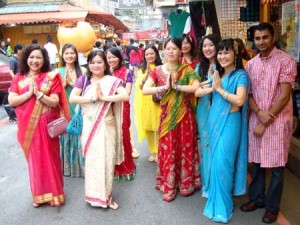 First generation immigrants from Taiwan usually share a common language, Mandarin, although many also speak Taiwanese and to a lesser extent, the Hakka language, depending on heritage and whether the individuals are exposed to Mandarin through Mandarin Chinese schools. Many first generation immigrants educated before 1945 speak Japanese as their second native language. As with most immigrants to the United States, linguistic fluency in the heritage language quickly disappears in the second generation. Many second generation Taiwanese Americans are exposed to Taiwanese, but their level of proficiency varies. Many second generation immigrants speak Taiwanese as their heritage language and know little Mandarin, while others, especially whose families are from the Taipei Metropolitan Area, speak Mandarin as their heritage language and know little Taiwanese. Second generation Taiwanese of Hakka descent tend to speak better Mandarin as their heritage language. There are many first generation Taiwanese of full Hakka heritage who may speak all three languages. Taiwanese Americans of mixed Hoklo and Hakka Heritage may speak only Mandarin as their heritage language. Second Generation Taiwanese who are of mixed Hoklo Taiwanese and waishengren (mainlander) heritage or full mainlander heritage may only know Mandarin at most and not a word of Taiwanese.
First generation immigrants from Taiwan usually share a common language, Mandarin, although many also speak Taiwanese and to a lesser extent, the Hakka language, depending on heritage and whether the individuals are exposed to Mandarin through Mandarin Chinese schools. Many first generation immigrants educated before 1945 speak Japanese as their second native language. As with most immigrants to the United States, linguistic fluency in the heritage language quickly disappears in the second generation. Many second generation Taiwanese Americans are exposed to Taiwanese, but their level of proficiency varies. Many second generation immigrants speak Taiwanese as their heritage language and know little Mandarin, while others, especially whose families are from the Taipei Metropolitan Area, speak Mandarin as their heritage language and know little Taiwanese. Second generation Taiwanese of Hakka descent tend to speak better Mandarin as their heritage language. There are many first generation Taiwanese of full Hakka heritage who may speak all three languages. Taiwanese Americans of mixed Hoklo and Hakka Heritage may speak only Mandarin as their heritage language. Second Generation Taiwanese who are of mixed Hoklo Taiwanese and waishengren (mainlander) heritage or full mainlander heritage may only know Mandarin at most and not a word of Taiwanese.

